This post may contain affiliate links. For more information, see our privacy policy.
These crisp, buttery melt-in-your-mouth delicious Irish Shortbread Cookies require just one bowl and no mixer! They come together quickly and disappear even quicker, so make plenty!
Oh my! I've made lots of shortbread in my years, but these Irish Shortbread Cookies... I think they just might be the best ever!
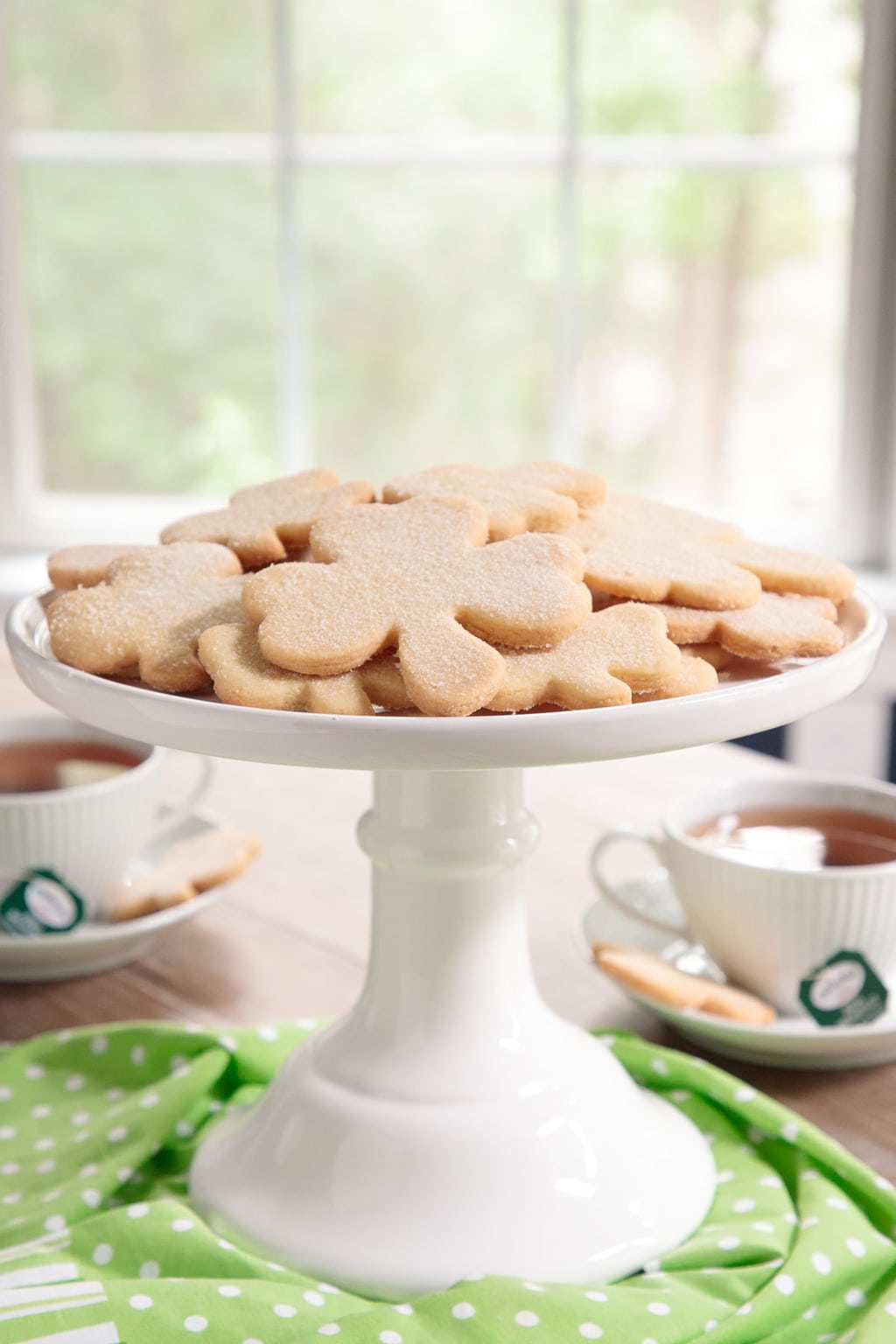
If you're intimidated by rolling and cutting dough, don't be! This dough is a dream to work with and can be made by even novice bakers. We made a little video to prove this to you! Check it out:
A fun, festive gift!
If you enjoy sharing gifts from the kitchen with friends, family, neighbors, etc, it's your ☘️ lucky day ☘️! We've created some really fun labels to adorn you gifts. They're free for the asking and you can print them up on your computer.
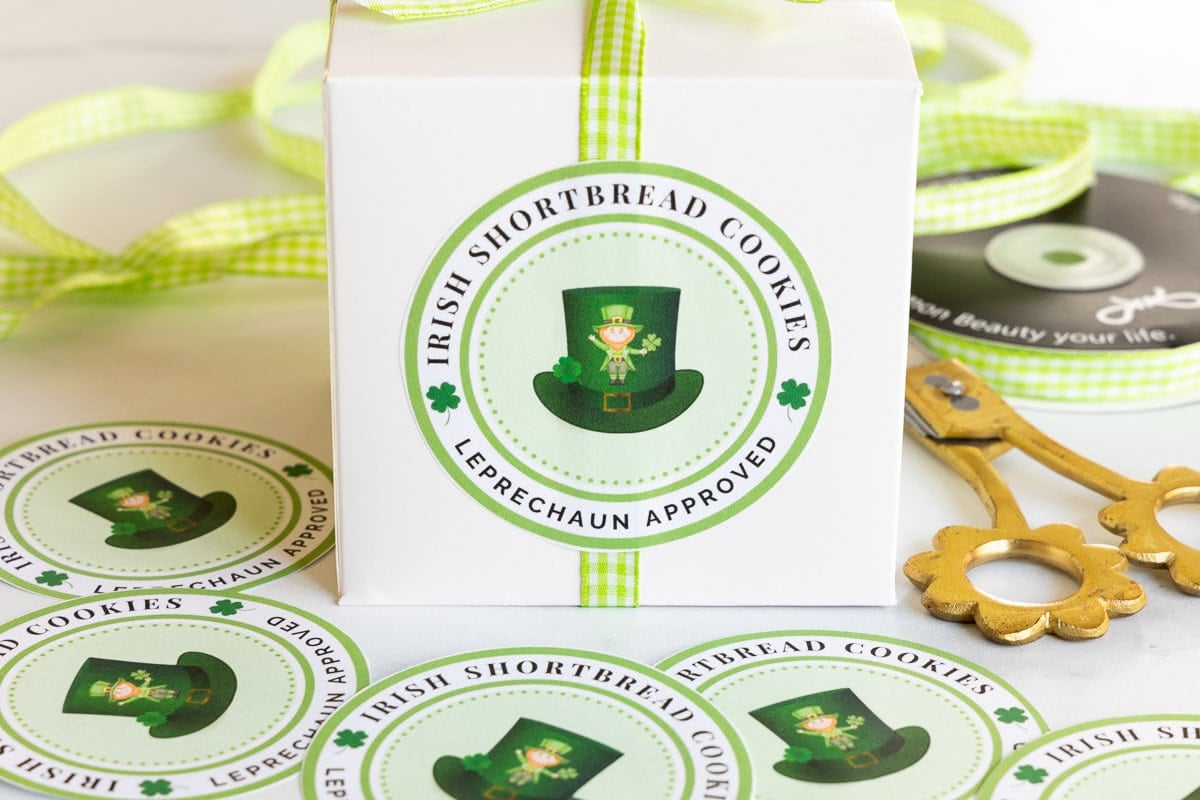
To receive a PDF for the labels picture below along with instructions on how to use them, just leave us a comment in the comment section at the bottom of this post, letting us know you'd like to receive them. We'll email the PDF right to your inbox.
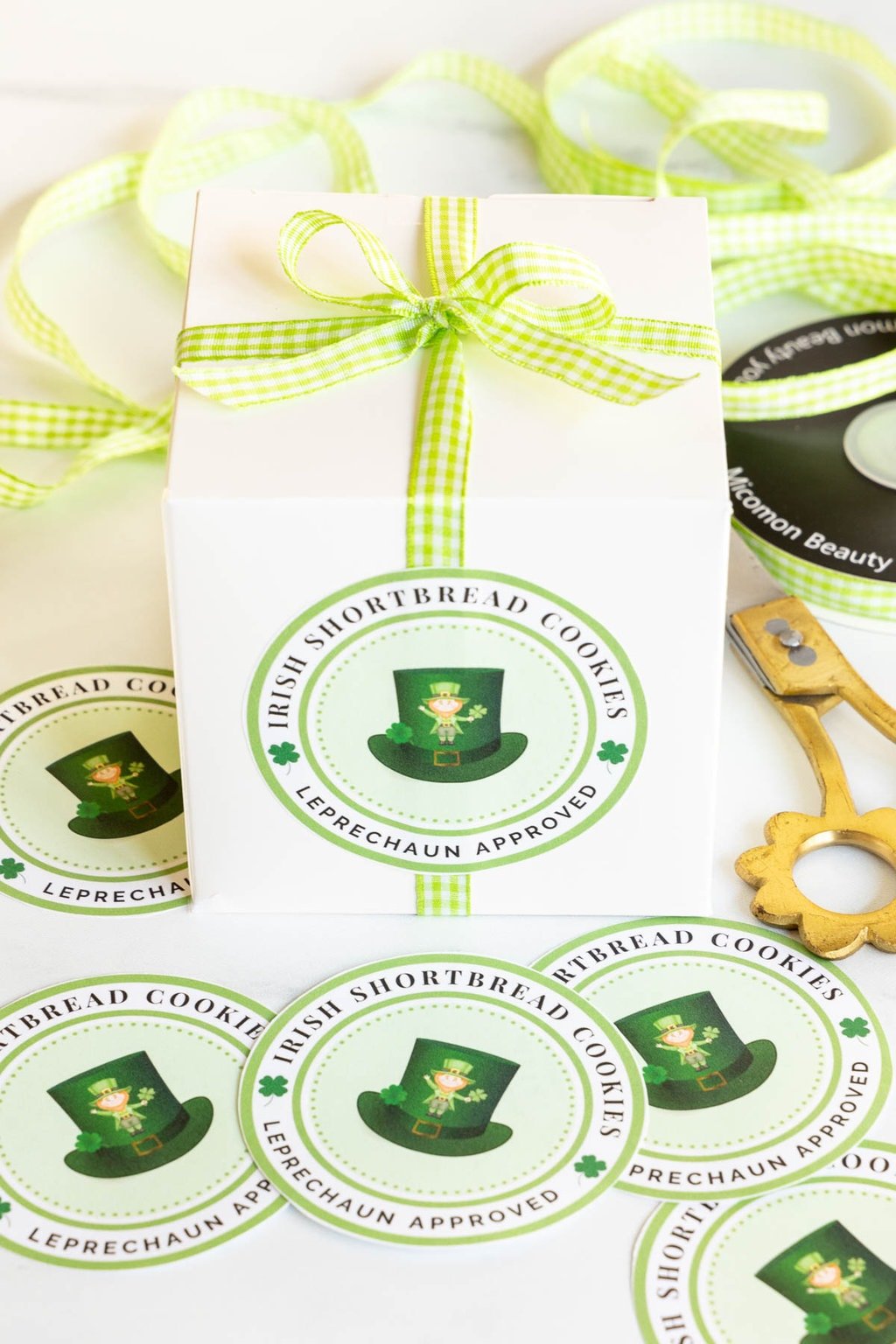
What is shortbread?
Shortbread is probably the simplest of all sweet confections with an almost unbelievably short ingredient list - butter, sugar and flour.
According to Historic UK, the history of shortbread goes back to the days of Mary Queen of Scots who reigned in the mid to late 1500s. Originally, "Any leftover dough from bread making was dried out in a low oven until it hardened and became very crisp. It was called "biscuit bread". Gradually the yeast in the bread was replaced by butter" (and more sugar) and evolved into what we now know as shortbread.
The fame and popularity of shortbread spread quickly and it's been noted that Queen Victoria and Prince Albert loved serving shortbread to their important guests. Shortbread remains a classic tea time treat all throughout the UK and these delicious, crisp, buttery cookies have become a favorite of sweet eaters all over the world.

What is Irish shortbread?
You might be surprised at the answer to this question. There's really only one difference in these Irish Shortbread Cookies and most other shortbread recipes. And it's actually not the recipe itself.
The difference is Irish butter! I've made tons of shortbread over the years and have tried lots of different recipes. Most of them are fairly similar. As stated above, shortbread is not complicated as far as ingredients go; rather it's super basic. In this particular recipe, I'm convinced that it's the Irish butter than takes them over the top.
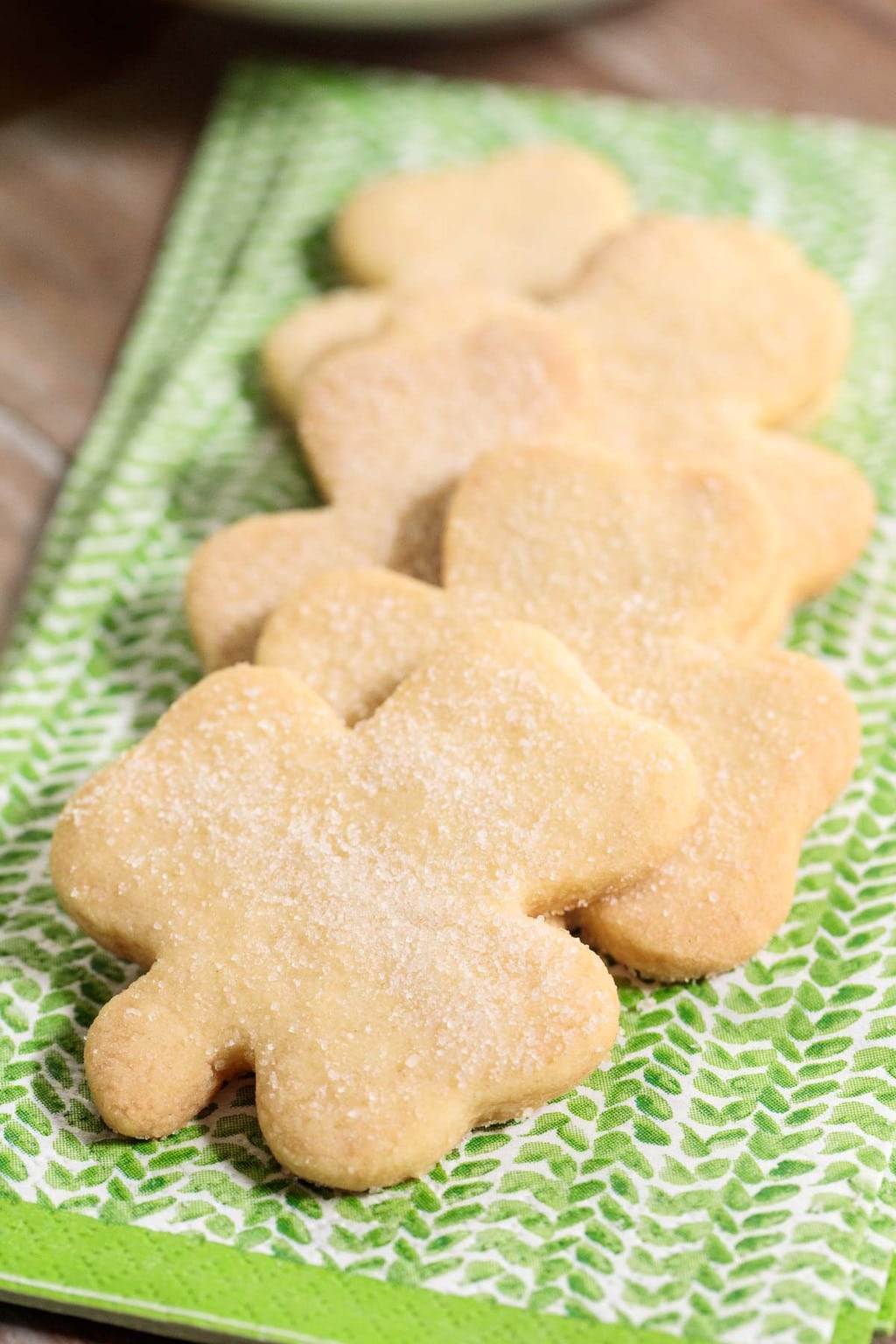
Does the butter really make a difference?
Yes! I always bake with butter and keep a supply of good, but reasonably priced (American) butter in my refrigerator and freezer, but I decided to try making this Irish Shortbread Cookie recipe with Irish butter, as it's known to be among the best butters in the world. And after all, the recipe is for Irish shortbread, right?
So I splurged a bit and bought a stash of Irish butter (Kerrygold). After the cookies were baked and cooled I took a little nibble. "Wow"! was my response. It was so crisp, buttery and had fantastic flavor. And when I gave Scott a cookie to sample he took one bite and said "Amazing!". Since then, I've had quite a few additional taste-testers - young, old and in between. They all agree these cookies are outrageously delicious.
Yes, the butter does make a difference!
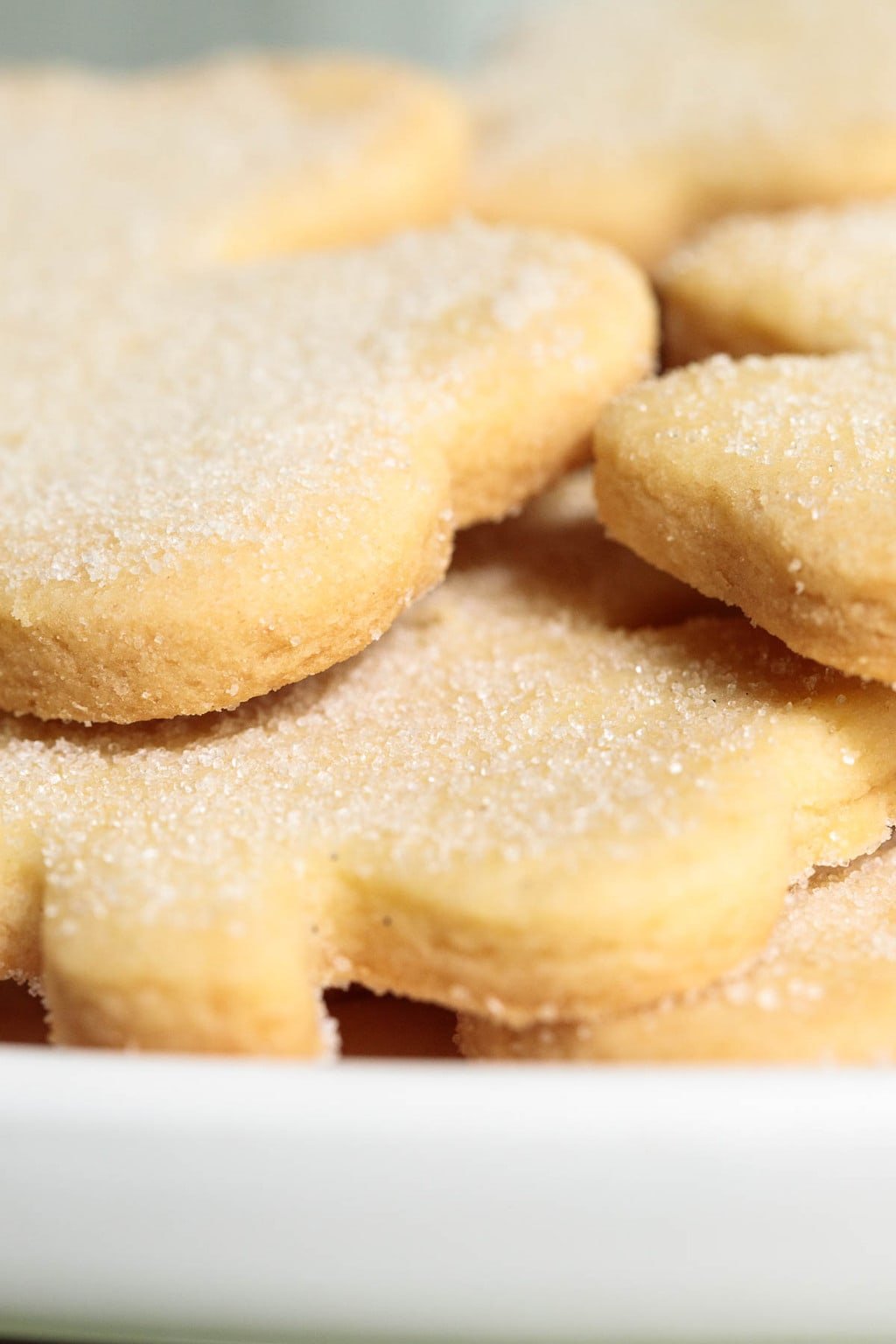
Why is Irish butter so good?
After reading this post, thus far, you might think it's sponsored by the Irish Butter Board or whatever they call their butter promoting organization; or maybe Kerrygold. Nope, not true. I've simply discovered that it's really fabulous butter, both for baking and on bread (it's crazy on these Unbelievably Easy Artisan Rolls) and I'm not alone in this observation. According to Epicurious, Irish butter is butter that's "churned with cream from Irish cows that eat Irish grass, not hay" which gives it amazing flavor. They also describe Irish butter (Kerrygold, in particular), as "a dream to bake with".
Irish butter (and many other European butters) are naturally more yellow in color. Part of this is due to the cows being grass fed and part is because there is less water than in most American-made butter. The less water, the more butterfat which creates a richer, more flavorful butter. Kerrygold and most other European butters contain 82% butterfat where the majority of American butter is at 80%. 2% might not seem like a lot but I think you will "get it" when you take the first bite!
A number of years ago, Scott and I had the wonderful opportunity to visit Ireland. We traveled the perimeter of the beautiful Emerald Isle from north to south and lots of destinations in between. The name Emerald Isle is truly accurate. Below is what we saw just about everywhere we went. Can you see why the cows are happy in Ireland and produce such great milk for making butter?
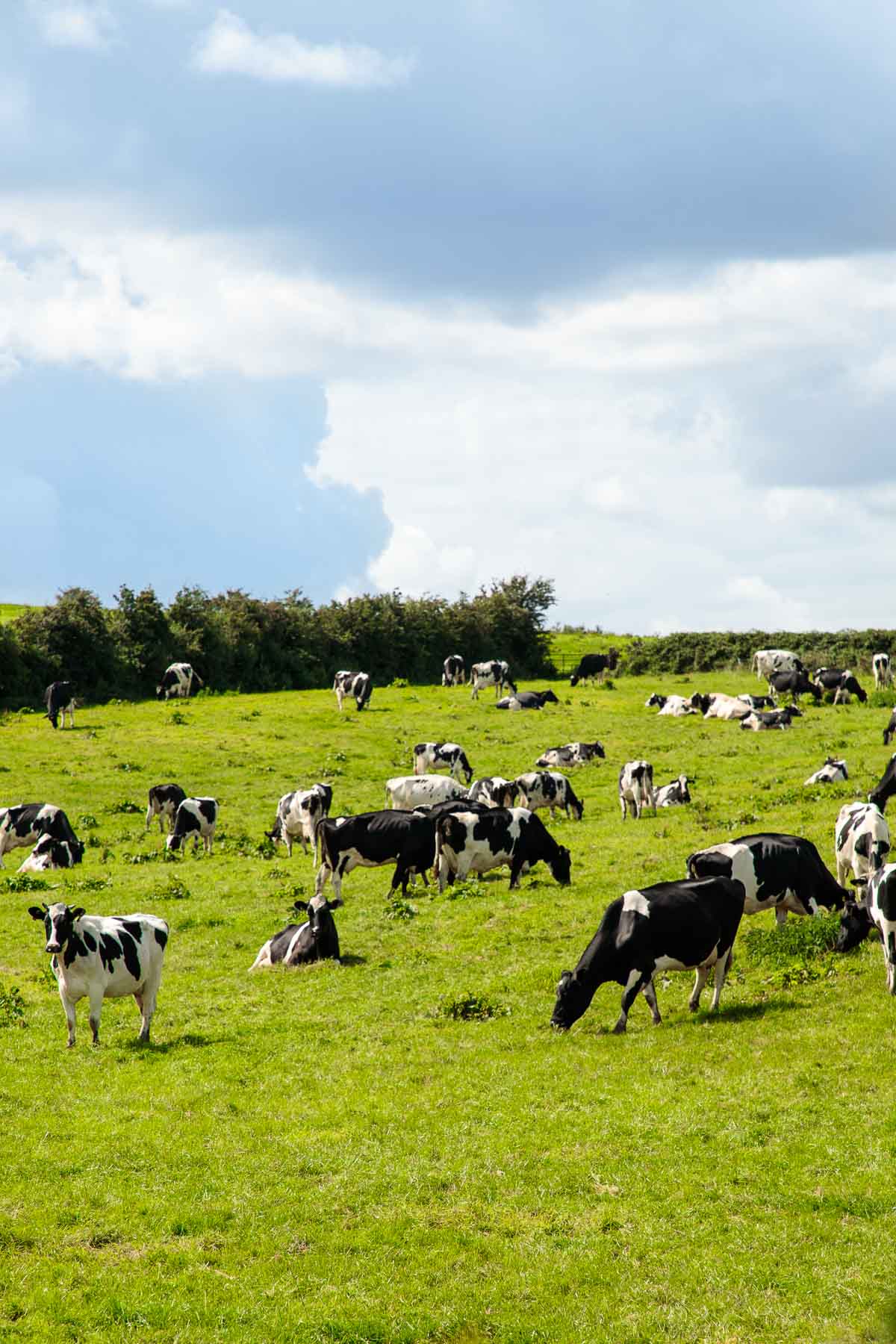
All this to say, you can definitely make these Irish Shortbread Cookies with your usual brand of butter and they will be delicious. But if you want something over-the-top, crazy delicious, put Irish butter on your shopping list and make a batch of these melt-in-your-mouth, almost-make-you-want-to-cry-they're-so-good cookies!
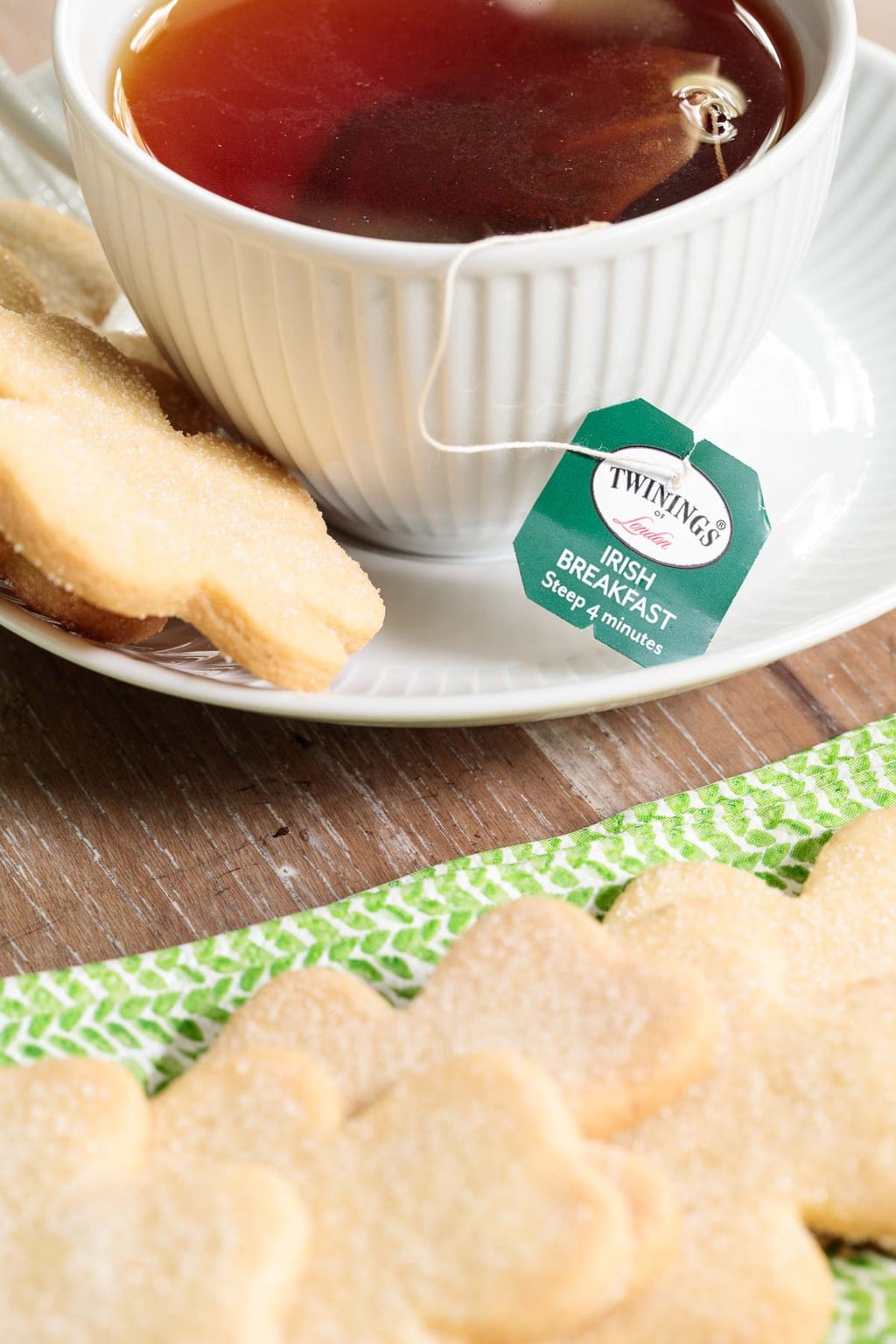
Sláinte! (the Irish expression for "Cheers")
Café Tips for making these Irish Shortbread Cookies
- Because there’s no mixer used, the butter needs to be very soft when mixing up these Easy Irish Shortbread Cookies. Either let the butter come to room temperature by letting it sit out overnight or you can use the microwave. A short stint in the microwave on power level 10 (10%) works like magic to soften butter. You’ll need to experiment a bit with your microwave though, as they’re all different. Start with 20 or 30-second increments at power level 10 until you learn how long your microwave will take to get the butter nice and soft, but not melted.
- You might wonder why these cookies need to be chilled for at least an hour before baking. The chilling helps them keep their shape in the hot oven. Also, chilling the cookies, uncovered, helps them to dry out a bit which is a good thing with shortbread, as it intensifies the flavor. So it's a win-win!
- A small amount of cornstarch in shortbread also helps the cookies to keep a nice shape in the oven and adds to the crisp texture.
- The directions for these Irish Shortbread Cookies instruct you to roll them ¼-inch thick. I'm not very good at rolling dough to an even thickness, so I use this wonderful, reasonably-priced rolling pin that makes my cookies look like an expert rolled them. It has adjustable disks (1/16, ⅙, ¼, and ⅜-inch) that make it super simple to roll to whatever thickness you want.
- A few tips on rolling and cutting out cookies:
- Keep your work surface and rolling pin dusted with flour.
- I also like to rub the cutting edge of my cookie cutter in a little flour in between each cookie.
- Press fairly firmly when cutting out the cookies, but don’t twist the cookie cutter as the shape will get distorted.
- If you don’t have room in your refrigerator to chill the cookies on two sheet pans, just transfer all of them to one pan after cutting. Then later, once they’re chilled, you can divide them between the two pans for baking.
- It's fine to reroll the scraps and cut more cookies.
- The cookies will be slightly puffed after being in the oven for a while. That's why I like to take them out after 8 minutes and give them a nice flat top by pushing gently on the tops with a metal spatula. This is also when I sprinkle the cookies with sugar, as it stays on top of the cookies better than if you sprinkle them right away.
Thought for the day:
Whoever believes in Me,
as Scripture has said,
rivers of living water will flow from within them.
John 7:38
What we're listening to for inspiration:
If you enjoy this recipe, please come back and leave a star rating and review! It’s so helpful to other readers to hear your results, adaptations, and ideas for variations.
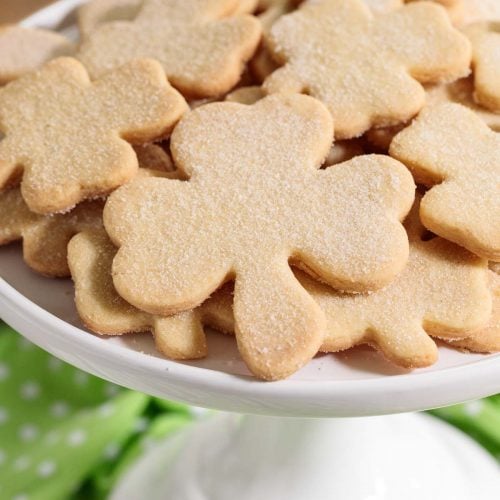
Easy Irish Shortbread Cookies
Ingredients
- 8 ounces very soft butter, Irish butter, if available (I use salted)
- 1 teaspoon vanilla extract
- ½ cup granulated sugar
- 1¾ cups all-purpose flour
- ¼ cup corn starch
- sugar for sprinkling
Instructions
- Line two sheet pans with parchment paper.
- In a large bowl, mix the butter and vanilla until smooth and no lumps remain. Add the sugar and mix together until smooth and thoroughly combined.
- Add the flour and corn starch. Mix with a sturdy spatula or wooden spoon until all flour is incorporated. It may seem like too much flour at first, but just keep mixing until it’s all incorporated.
- Dump mixture out onto a generously-floured work surface and knead for about 30 seconds until dough forms into a ball and is not sticky. Divide dough in half and set one portion aside.
- Lightly flour your rolling pin and roll out the dough until it's ¼-inch thick (see Café Tips above in post.) Add more flour to work surface and rolling pin as needed if dough is sticky.
- Cut into your favorite shape and place on prepared sheet pans. Knead dough scraps together, roll and cut out shapes until dough is used up.
- Place pan in refrigerator, uncovered, for at least one hour and up to 12 hours.
- When ready to bake, preheat oven to 350˚F. Remove cookies from refrigerator.
- Bake for 8 minutes. Remove pan from oven and sprinkle lightly with sugar. Flatten any puffed part of cookies with the back of a flat metal spatula. Sprinkle cookies with more granulated sugar. Return to the oven for 5-7 additional minutes, or until light golden brown.
- Allow to cool on pan for 5 minutes then transfer to a cooling rack to cool completely. Store in an airtight container. Hide the container if you plan to serve these to guests.
Notes
Nutrition
The Café Sucre Farine is a participant in the Amazon Affiliate Program. The Amazon Affiliate Program is designed to provide a means for sites to earn advertising fees by advertising and linking to products on Amazon. The price you pay as a consumer does not change, but if you make a purchase through one of our links, we receive a small commission – and we continue delivering delicious recipes to you!
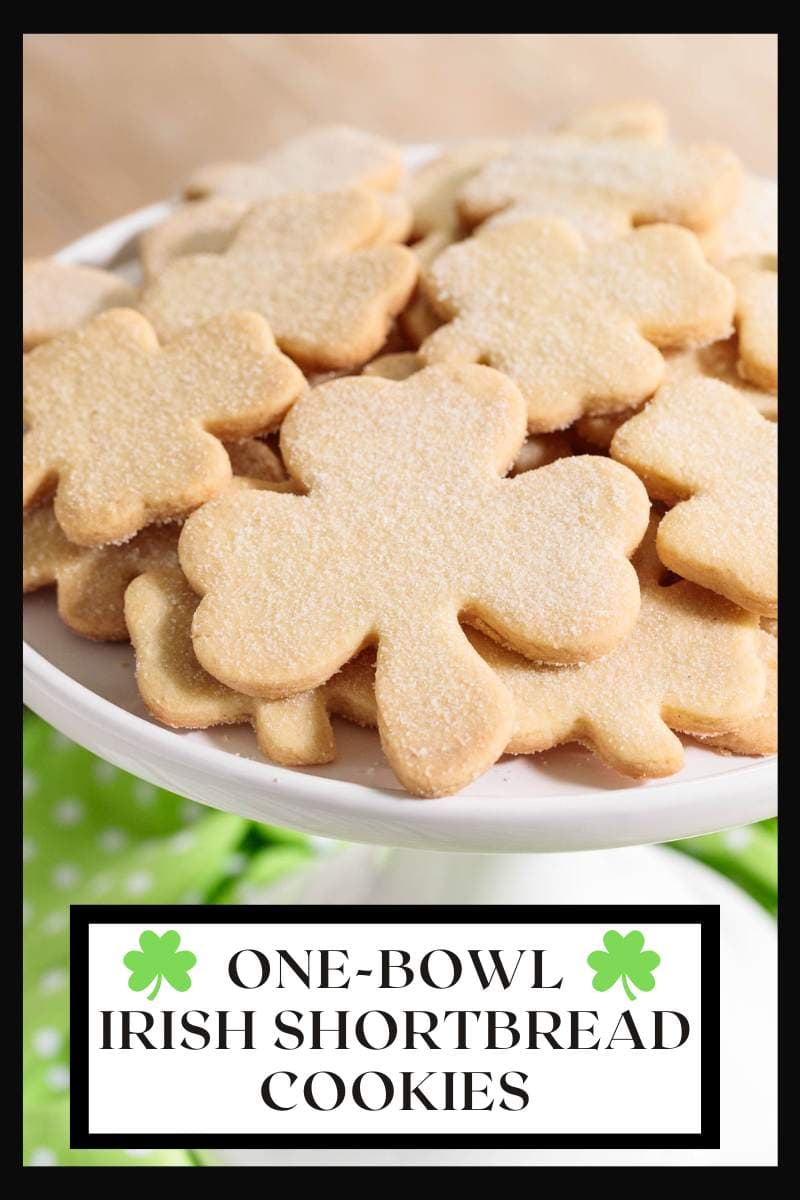


Barb M says
These were absolutely delicious. I had made them last month for St Patty's day and used green sugar. My husband and I both loved them. Definitely a keeper. I meant to reply back sooner. I plan to make them again with a diamond cutter and dip two edges in chocolate. All your recipes that I've tries are winners.
Lindsay @ The Café Sucre Farine says
Wonderful! Thank you for the kind review, Barb!
Billie Thomas says
Great recipes! I would like to receive your free printable labels for the Irish shortbread cookies.
Thank you!
Lindsay @ The Café Sucre Farine says
Thanks, Billie! Sending them your way.
Stephanie says
Thanks for the recipe! Please send leprechaun approved free printable labels - they are so festive! ☘️😉
Lindsay @ The Café Sucre Farine says
Sending them your way, Stephanie!
Ann Betz says
Please send me labels for Irish shortbread cookies! They're sooo cute. Thank you
Lindsay @ The Café Sucre Farine says
Hi Ann, we will email them to you!
Linda says
These sound heavenly! Can’t wait to try them. Please send the adorable labels to me! Tanka’s so much : )
Lindsay @ The Café Sucre Farine says
Sure, Linda!
Maureen Smith says
Can't wait to receive the labels. Just made a batch of cookies. Thank you!
Lindsay @ The Café Sucre Farine says
Sending them now, Maureen!
Terry says
Please send PDF of label. Can't wait to try. They look delicious.
Lindsay @ The Café Sucre Farine says
Sending them your way, Terry!
Patty younghans says
Please send labels for Irish shortbread cookies! Thank you
Lindsay @ The Café Sucre Farine says
Sure, Patty!